2020s Vision – The Athlete Voice: ‘Alliance’ Not ‘Union’ Aims To Take ISL Model To Multi-Sports ‘Games Of Magic’
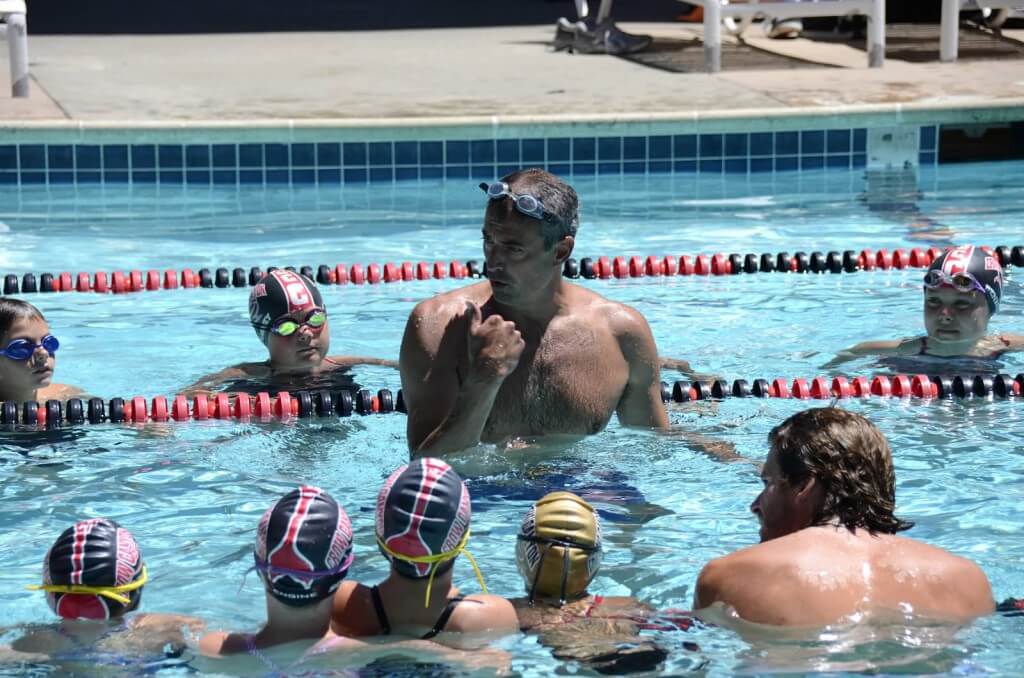
2020s Vision – Matt Biondi & The International Swimmers’ Alliance, Part 2
Part 1: Matt Biondi’s Mission To Enrich & Educate Swimmers
“It’s not a union”, says Matt Biondi.
Change. Demands. Speaking out. Insisting sports bosses engage, listen, act on the word of the athlete. Moving in numbers. Acting as one. Sounds like a union. But it isn’t, says the director of the International Swimmers’ Alliance.
“It’s not a union in the sense they’re [the swimmers] not paying dues to be a part of it. We’re no so much negotiating with the current employers, which would be the IOC, as seeking to open up additional economic opportunities, just like the ISL.”
The International Swimming League (ISL) launched in October last year. The format delivered Pro-team competition in which swimmers from different nations joined forces on eight teams, four of which made it to a Final Match in Las Vegas last month, Energy Standard the first season champion.
The Alliance is involved in talks to take that format and build a series of mini-Olympics, called the Games to Magic. If the event gets off the ground, says Biondi, it “will incorporate Track and Field, Swimming, including Open Water, and BMX biking”.
He points to the multi-sport Glasgow 2018 European Championship that incorporated swimmers, runners, bikers and others. The event did not quite deliver what was intended: multiple sports all holding their separate continental championship in the same city, benefiting from economies of scale and delivering a festival-of-sport feel, complete with street food and other entertainment that attracts families and boosts the audience. Sport as a great day out for all.
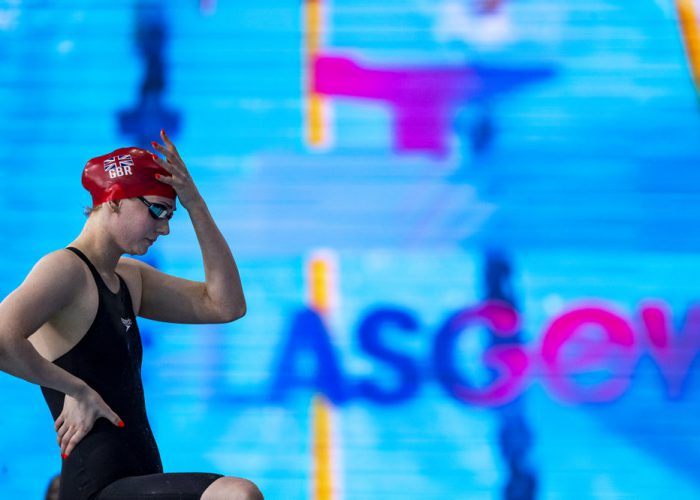
Freya Anderson gets her head round a range that extends from 50m to 400m in Glasgow – Photo Courtesy: Patrick B. Kraemer
The track and field events ended up being in Berlin, not Glasgow, but the concept of allowing sports to run their own affairs while coming together under one umbrella for a two-week period has earned plaudits, from hosts and the sports involved as well as the audience, hotels and related business.
The model also speak to some aspects of sustainability we will raise later in this 2020sVision Series. Multi-sports events are a little like supermarkets in terms of economies of scale and the attention the less popular items on the shelf may attract if they sit alongside the chocolate, chips, chlorella trend and beer, so to speak.
Biondi talks of athletes from four sports and many countries joining pro-teams that compete specifically at the Games to Magic across sports, no national flags, in much the same way ISL teams are formed of swimmers of different nations and different strengths, stroke and distance.
What would the Games of Magic look like? Biondi explains what sport may start to look like in the not-too-distant future, a place perhaps of a little Olympics each year not just the one big one every four years:
“There would be a single-host city, rotated between four fixed cities every four years, with four sports with teams across all those sports, but instead of 50,000 athletes like the Olympics it would be 1,000 athletes. It would be family friendly, you would be able to go see several events conveniently in the same day: these would be the top athletes in their event.”
Questions on the viability of such an event include who organises what. The current thinking is that each sport must bring its offer to the party. As Biondi puts it recalling a comment made by someone else in discussions about “Magic”: “If Biondi can’t get the swimmers together, then he won’t be able to do the track and field athletes.”
Biondi envisages athletes receiving 50% of net revenue in prize money, appearance fees as well as contributions towards travel and accommodation. Host cities would receive 30% of revenues, while management would get 20%.
The timing of the event on a cluttered calendar is among matters yet to be decided.
Calendar Chaos And Revolution
I raise the issue of ISL’s proposed expansion from 7 events over 11 weeks to 27 events stretched out from September to April each northern winter. That would certainly force discussion about calendar chaos, another of our 2020sVision themes to come, would it not? Biondi notes a key detail of Grigorishin’s League vision when he says:
“Swimmers are not going to go to all this stuff all of the time. And they don’t have to.”
The regional derby, answering the call of team need at a crunch match and being ready for the showdown matches is where it will count for the likes of Caeleb Dressel, Adam Peaty and even Katinka Hosszu, though it is not beyond the bounds of possibility that the Hungarian who has made an art and business of multi-racing may wish to make a 27-event point beyond Tokyo 2020, her fifth Games in a journey that began at 15 with a 31st-place finish in 2:04.22 over 200m freestyle at Athens 2004.
Much water under the bridge, Hosszu, the first race prize-money millionaire in swimming and Hungary’s “most valuable athlete” for the past five years, has not only taken on her rivals in the water. In the past Olympic cycle, she forced Hungary’s FINA Bureau member Tamas Gyarfas out of the top seat at the domestic swim federation after a public showdown over the state of governance.
Then, in 2018, she joined Tom Shields and Michael Andrew in a legal challenge to FINA aimed at securing a legal decision in the United States that would reflect what is already written into European Union competition law: no organisation can dictate where athletes compete in order to earn a living nor can they prevent them from earning a living by suspending them from FINA competition.
Catch 22. The legal case in the United States is proceeding after a December 16, 2019, ruling at the U.S. District Court Northern District of California, in which Magistrate Judge Jacqueline Scott Corley denied FINA’s motions to dismiss the case and also denied the defendant’s administrative motions to seal.
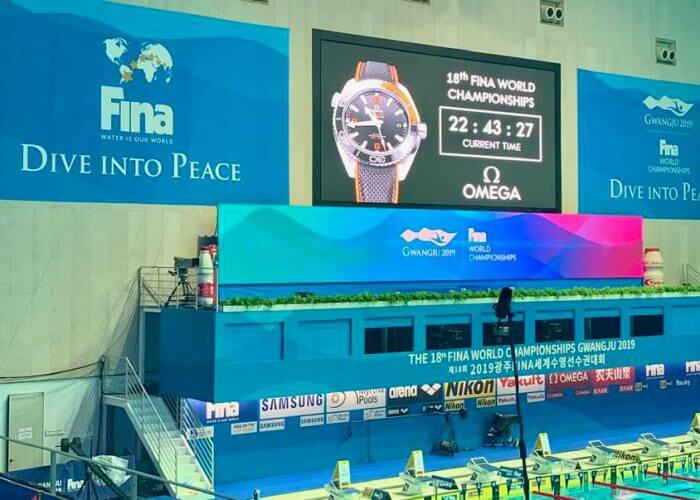
Dive into Peace, says the pool poster but swimming is at war over the fight for clean sport – Photo courtesy – Craig Lord
Meanwhile, FINA has shifted its position, launched the Champions’ Series and allowed the ISL to go ahead, while maintaining that it would not allow any World records set at certain events on dates that clashed with the World Cup to stand. That position is also one likely to fall in the face of legal challenge, given that many competitions take place around the world on the same dates as FINA events, with no impediment to any global records standing providing FINA’s competition rules have been observed.
There are obvious clash point ahead – doping among the obvious ones – and athletes, too, have a learning curve ahead as they start to make their voice heard.
When Biondi says that dates for the ISL would not clash with the Olympics and may need adjusting only once every four years to account for the Games, his thought bypasses a big part of the swimming world.
- What, for example, would the impact of a northern winter-long Pro circuit be on long-standing traditional events?
- Will, for instance, the likes of Peaty, Mireia Belmonte, Ramomi Kromowidjojo and others be able to attend an April League showdown in the same week/month as their national championships and major-event selection trials are held?
- Will domestic federations and their performance team simply shift their four- and even eight-year plans already in place to make way for the ISL?
- Will swimming continue to be a sport wedded to the bolt-on diet in which new events are simply added on to existing calendar chaos?
- Many questions ahead – and some are unlikely to be answered without friction and confrontation.
Not what we’re against but what we’re for …
The Alliance mindset, meanwhile, is “not what we’re against but what we’re for”, says Biondi. When ‘what we’re for is changing the culture and structure and financial model of a sport, anti-doping wars in the mix, the ‘what we’re against’ will never be far away. Furthermore, athletes have shown of late that they are very willing to raise ‘what we’re against’ and understand why that is unavoidable and even helpful to getting things done. It is also how the mainstream media will report obvious clash points where two sides of an argument meet on a sharp blade.
In terms of competitions and earning power, Biondi notes: “It’s about how we can organise these new opportunities.”
He cites the tagline in Kevin Kostner’s Field of Dreams movie:
“Build it and they will come”.
In truth and experience, it depends what you build. The FINA World Cup has offered the biggest prize money in swimming history and yet the vast bulk of the best swimmers in the world have bypassed it for many a long year. The new FINA Champions’ Series, which held to its mantra but had to change its mission before a single race was even swum, is already struggling. The point was to send invitations to the Olympic and World champion(s), the World record holder and the current World No01. Very few races so far have managed to achieve that, the concept having been rushed through to meet the ISL challenge but not thought through as it might have been.
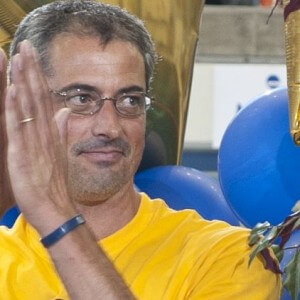
Matt Biondi – Photo Courtesy: Peter H. Bick
Biondi says, with a nod to the ISL, an organisation and event that is an infant yet in its cradle: “We don’t know what he reaction is going to be in the long run until we sort of go though Year Zero.”
There is, say athletes such as Katinka Hosszu, Cate Campbell, Sarah Sjostrom, Adam Peaty and Tom Shields, to name but a few, one big difference between Fina’s way of ‘building’ events and the way the ISL was built: the athletes were consulted – and consulted without the filter of an in-house athletes’ commission the athletes themselves suggest never speaks to them.
There are signs of subtle change in that direction, as we will soon report, but as yet there is no hint of any move towards truly independent athlete representation and voting power within the structures of FINA and member organisations.
The Challenge Within: What It Means To Be Professional
That’s one of the roads down which the Alliance will seek to make headway. The Alliance will also challenge its own constituents to evolve as professional sports people. Some of the measures are likely to involve a tussle between ‘what we’re for’ and ‘what we’re against’. Says Biondi:
“The swimmers will have to change their paradigm about what it is to be in top shape. When you look at other sports, for example in basketball … they play a lot of games and their main focus is competition. They are in play – and when they’re not in play, they’re doing low-key stretching and drills and getting ready again for the competition. Swimming has come from a background where you’re only good once every four years or maybe once every year. That’s your goal, so you just train, train, train, train and then you get one shot. The focus there, then, would be on World Records and peak performance. But what we’re talking about just sheer competition where times don’t matter as much as beating the person next to you and earning points for your team.”
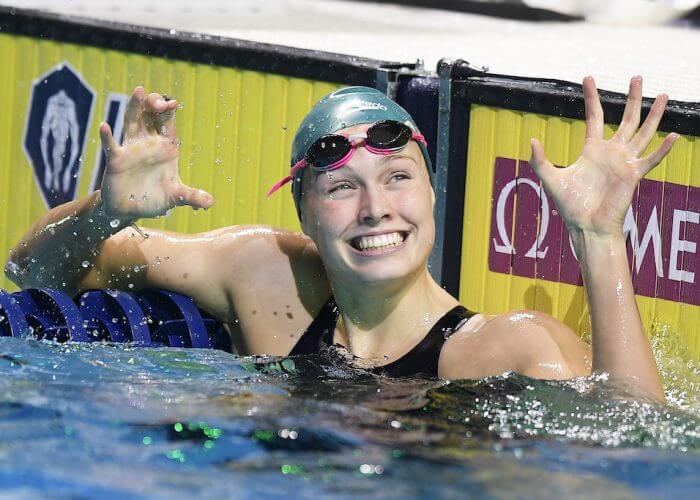
Minna Atherton – World- record Roar With a Smile – Photo Courtesy: Fabio Ferrari/LaPresse
I note the contrast of the clock at the European Short-Course Championships and the slower and mostly hidden clock on ISL tour. The championship moment flooded the World rankings with peak performances. While there were outstanding times on the League circuit, Minna Atherton‘s world- and Commonwealth-record efforts on backstroke and Daiya Seto‘s medley World mark cases in point, the thing that mattered most was the race, the tussle of teams, the entertainment and showcase of swimming as a thrill not a yawn of four-hour prelims.
“Absolutely,” says Biondi, adding:
“I felt that my swimming career took a huge leap forward in my confidence when I had to go to the Arizonas or down to UCI or USC in mid-season. The old paradigm was this mountain where you just do yardage, yardage, yardage and weights and you just break yourself down, with multi-mile swims all at once and then you rest and you begin to sharpen and then sprint and then you have this one defining moment of who you are as a swimmer.
“But in college we were doing all these incredible workouts and I had to go race against the best down there. It was close and I won some by a hair and lost some but it gave me a new perspective … you can always have excuses to perform.
“I guess that’s part of the mental side of competition, you can always think of some reason why not but at some point you’ve just got to get up and do the best you can and let your light shine, right. ‘This is what I’ve got, come and get me’, and if it’s not good enough then that’s what it is. And so you get into that mentality that that’s just where you can compete at a very high level for multiple times a year rather than once a year.”
The International Swimmers Alliance and Swimmers Association: Key Facts
- Structure: non-stock Limited Liability Company LLC
- Director: Matt Biondi
- The Board: 10 members, including six swimmers, all proposed by management but approved by swimming members known as the Swimmers Association; six swimmers proposed by swimmers; two members proposed by management; the director (Biondi) and and “independent representative with substantial legal expertise”, to be proposed by management or the Chair.
- Articles: a non-binding “Memorandum of Understanding” expressing an interest in working with and furthering the Alliance
Categories of membership, with emphasis on achievement in Long-Course Metres (LCM): - Junior Member: (i) Be under contract with, and competing for, a club team in the League; or (ii) Be ranked in the top 20 swimmers internationally for any event (LCM) for a period of at least two 2 years; membership lasts until no longer satisfying minimum requirements
- Associate Member: (i) Earn 600 career individual points in the International Swimming League (ISL) – via at least one race in at least 30% of all League matches; (ii) participate in a solo semi-final at the Olympic Games; (iii) participate in a final at the FINA World Championships (LCM) in a solo event; (iv) win a medal at the Pan Pacific Championships or the European Games/Championships (LCM) for an individual event; or (v) win a gold medal at the Commonwealth Games or Asian Games; membership lasts 4 years;
- Member: (i) earn 1500 career individual points in the ISL – via at least one race in at least 25% of all League matches; (ii) participate in a solo final at the Olympic Games; (iii) win a medal at the World Championships (LCM) in an individual event; or (iv) win a gold medal at PanPacs, Europeans or equivalent in an individual event; membership lasts 4 years
- Senior Member: (i) earn 2500 career individual points in the ISL – via at least one race in at least 25% of all League matches; (ii) win an Olympic medal in an individual event; or (iii) win a gold medal at World Championships (LCM) in an individual event; membership – 8 years for Olympic medallists; 6 years for World-Championships medallists + an additional 4 years as a “Member” thereafter.
- Exclusive Member: (i) Earn 4000 career individual points in the League – via at least one race in at least 25% of all League matches; or (ii) win an Olympic medal in an individual event; membership – until race retirement
- Honorable Member (Active or Retired): be voted in by at least 75% of the Members; membership is for life
- There is also a special rank of swimmer: those who sign up to and build the Swimmers Association from scratch will be recognised as “Founding Members” and receive “benefits after retiring at a membership level one tier below their status at the time of retirement, for a period of between 3 and 10 years”. The detail of that is still being discussed.
- Earnings: race earnings go through the Alliance and will be re-distributed through the ranks of swimmers to help reward the individual but also benefit the team and the Alliance and League in general.
- Management to get a 20% commission on all prize money, with incentives to to earn more if they facilitate bigger earnings for athletes from competitions such as the Olympic Games and World Championships
- Athletes will receive 80% of all earnings, with any money earned outside the orbit of the Alliance beyond the reach of the Alliance
- Top status elite athletes (measured on big medals and League involvement) will receive 80% of all athlete earnings
- Retirement Plan: talks are being held on paying a percentage of athlete earnings into a pension fund
- General: Outside of the major events that fall under the Alliance’s jurisdiction, swimmers are free to accept prize money directly. Athletes who rack up earnings on the Pro Swim Series circuit, for example, would not redistribute that money through the Alliance.
Sustainability, Longevity
Biondi acknowledges that the Alliance will only survive if athletes stick together and work with it and for it:
“The struggle to organise athletes and have them stand together is decades old. Previous efforts faded out and the status quo prevailed.”
The arrival of a big investor, Konstantin Grigorishin, has served a s strong catalyst for change. The billionaire comes with vision – and a business plan and mindset. He wants a return on his investment.
The first few years of the coming decade will decide where swimmers and swimming are headed. Meanwhile, the athlete voice is not the only one that counts, say others, and questions remain about what topics beyond share of money and formats for the most famous in the room.
Those and other issues ahead in 2020sVision.
2020s Vision
In this first quarter of the new decade and 2020, we will consider the following themes:
- The Athlete Voice
- Swimming Culture – what is it?
- Gender Vs Sex: a waking nightmare for women’s sport?
The Athlete Voice:
Do you have a contribution to make, a topic to suggest within the frame of the themes we are looking at this quarter? Your views on any theme can be left in the comments field at the foot of any article, while those who want to reach out with suggestions to the editorial team can contact us at editorial@swimmingworld.com.



